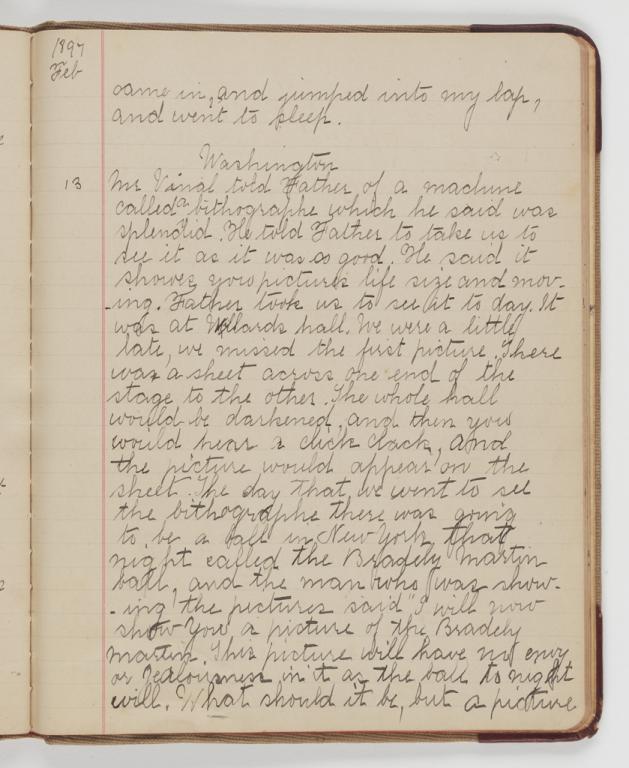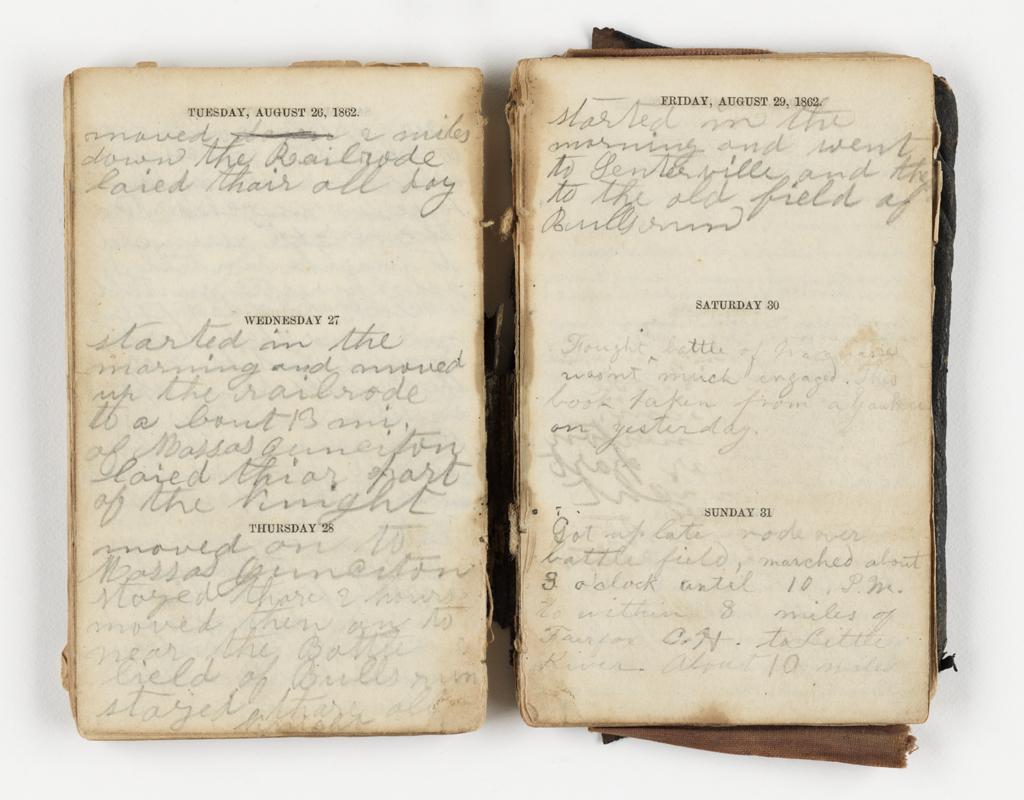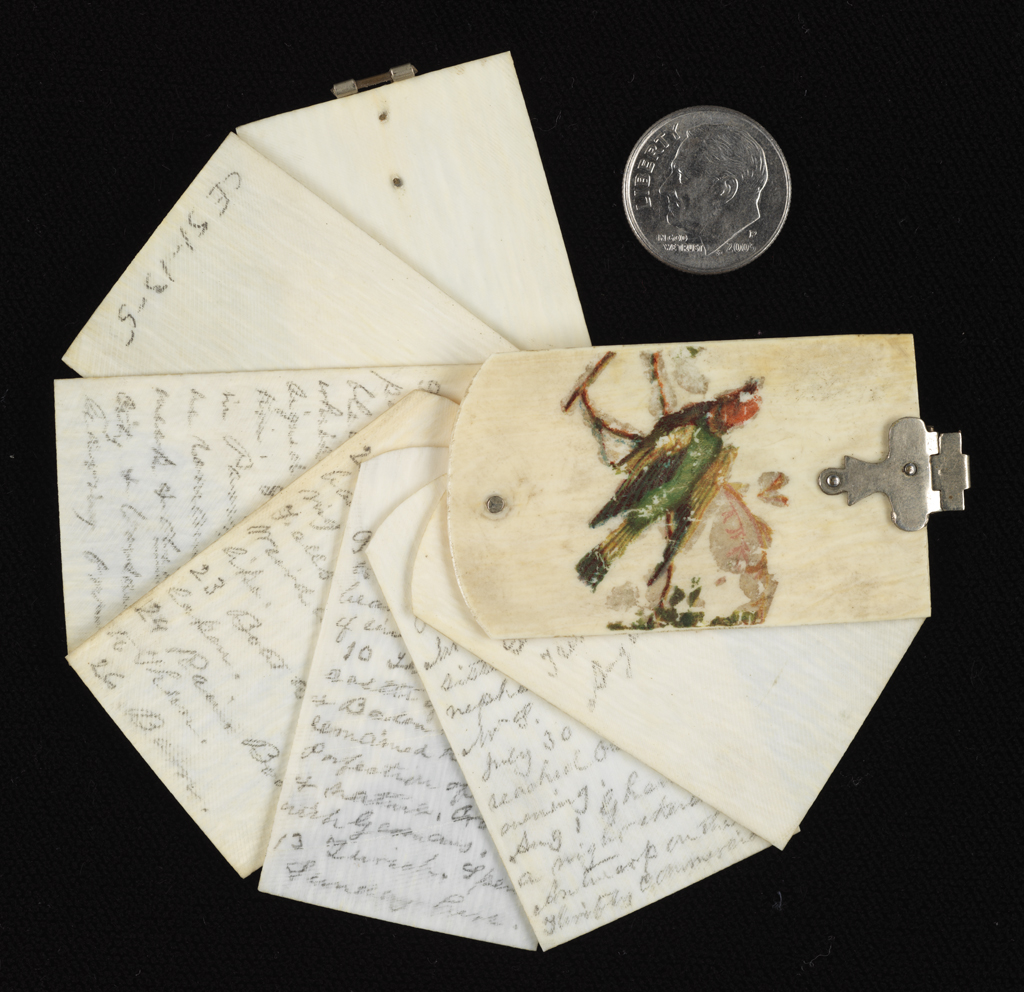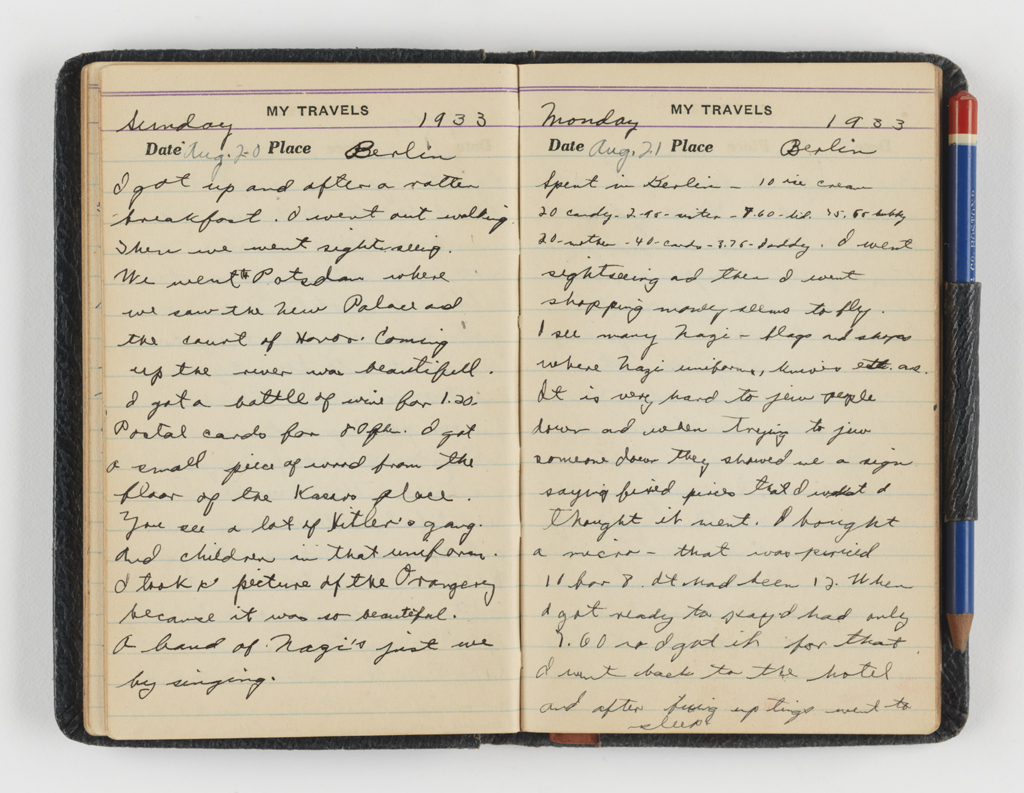Do you remember the first time you swam in the ocean? What about the first movie you watched? In June 1895, eleven-year-old Sarah Evelyn Baylor and her family journeyed from Halifax County, Virginia, to Princess Anne, Virginia Beach, Virginia. This visit marked the second time young Sarah saw the ocean, but its beauty had not diminished. In her diary entry for June 11, 1895, she remarked, "It is beautiful to see the great waves come roaring up and then fall back in the great, great ocean. I think it is heavenly." While at the beach with her family, Miss Baylor and her younger brother and sister, shared in their first delights in swimming. After ten days of swimming, playing in the sand, and doing "nothing else especially" Sarah delighted in making her first bathing suit. "It is grey with white dots in it and trimed [sic] with white. It is very pretty."
For the next couple of years Miss Baylor faithfully recounted her daily activities in her diary. Most days were consumed with her lessons, reading, sewing, baking, and visiting family and friends. But even these entries are amusing to read. Through Miss Baylor’s keen eye and descriptive accounts she breaths life into her diary. Some of her observations are laced with the neighborhood gossip, such as when two Mormons visited the area (13 July 1895) and others are touching tributes to her younger siblings.
Perhaps her later entries from the beginning of 1897 rival the excitement of the beach excursion. In 1897, Miss Baylor and her family stayed with relatives on an extended visit to Washington, D.C. Among the charms of the city were the collections of the Smithsonian, the cable car, and the Washington zoo. Perhaps the most exciting event occurred on February 13, 1897, when Sarah and her father saw a splendid machine that "shows you pictures life size [sic] and moving." As Sarah recounted, "The whole hall would be darkened, and then you would hear a click clack, and the picture would appear on the sheet.” One of the "splendid pictures" was of a train. "You see it coming in the distance, and then it turns before it gets to you. It goes at 80 miles an hour.”




